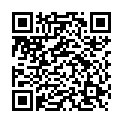|
|
|
| Module code: E922 |
|
2V+2U (4 hours per week) |
|
5 |
| Semester: 9 |
| Mandatory course: no |
Language of instruction:
German |
Assessment:
Project work
[updated 12.03.2010]
|
E922 Electrical Engineering, Master, ASPO 01.10.2005
, semester 9, optional course
|
60 class hours (= 45 clock hours) over a 15-week period.
The total student study time is 150 hours (equivalent to 5 ECTS credits).
There are therefore 105 hours available for class preparation and follow-up work and exam preparation.
|
Recommended prerequisites (modules):
E805 Controlling Electrical Drive Systems
[updated 12.03.2010]
|
Recommended as prerequisite for:
|
Module coordinator:
Prof. Dr.-Ing. Stefan Winternheimer |
Lecturer:
Prof. Dr.-Ing. Stefan Winternheimer
Dipl.-Ing. Johannes Mertes
[updated 12.03.2010]
|
Learning outcomes:
After completing this module students will be in a position to select and to dimension the most suitable drive for a specific problem. Students will learn to use project planning tools to process example applications right through to the final bid preparation stage.
[updated 12.03.2010]
|
Module content:
Overview of variable-speed drives:
Induction motors, converters, inverters and other variable-speed drives
Pumps, compressors and turbines:
Basics: Energy saving, starting times when connected to the main power supply and when connected to a converter, braking and stopping, braking times; examples: compressors and fans
Constant torque drives:
Basics: Conveyor technology, lifts and elevators, hoists and travelling drives, 4Q drives; examples
Positioning and stepper drives:
Basics: Stepper drives, selecting servo motors and converters; examples
Mechanical problems with drives:
Elastically coupled dual-mass oscillator, backlash
Project planning:
Project planning tools: Pfad, Sikostart, SIDIM
[updated 12.03.2010]
|
Teaching methods/Media:
Lecture notes, CD: “Siemens A&D Projektierungshilfe”, PC, video projector
[updated 12.03.2010]
|
Recommended or required reading:
[still undocumented]
|


